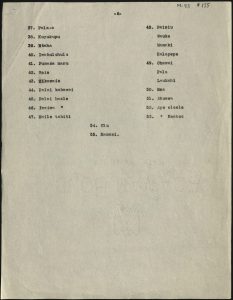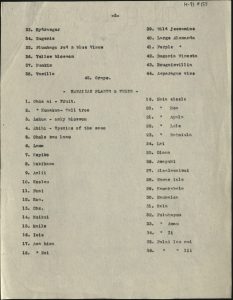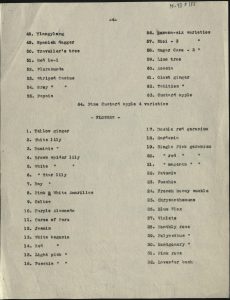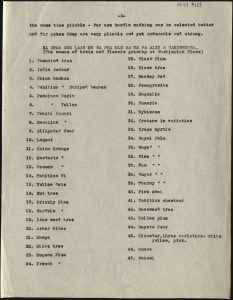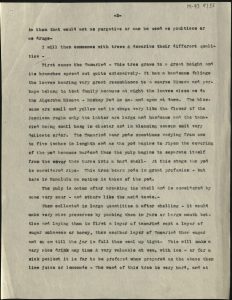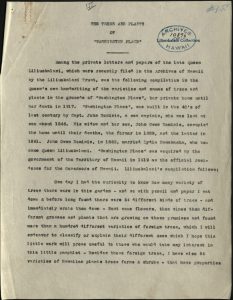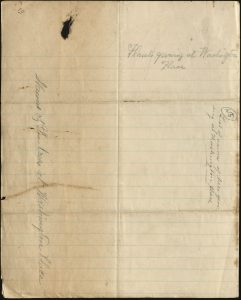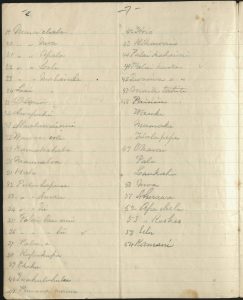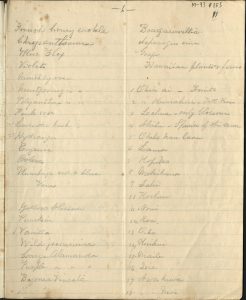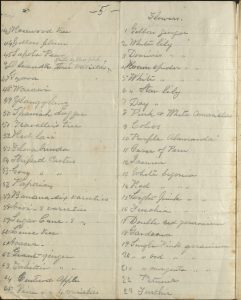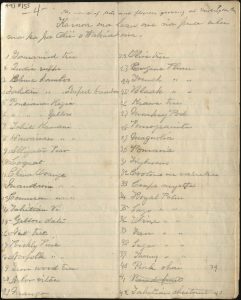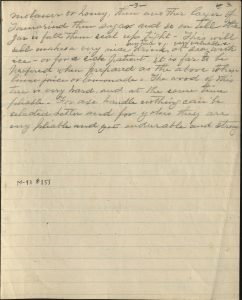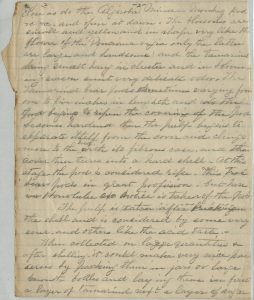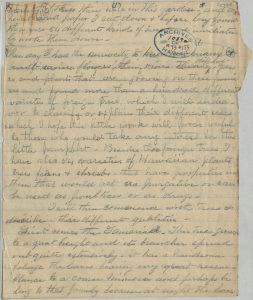Gardens
In a handwritten note, the Queen wrote,
“One day, I had the curiosity to know how many variety of trees there were in this garden – so with pencil and paper, I sat down and before long found 54 different kinds of trees – Next came flowers, then vines, then different grasses and plants that are flowing on these premises and found more than a hundred different variety of foreign trees… Besides those foreign trees, I have also 54 varieties of Hawaiian plants trees ferns and shrubs – that have properties in them that would set as purgative or can be used as poultices or as drugs[3]…”
The Queen was quite an outstanding gardener as her naval oranges were awarded a second-place ribbon from the Farmer’s Institute of Hawaiʻi[4]. Today, there are less trees on the property but the Muy Lang tree known to be planted by the Queen remain on the property[5]. A Pili Nut tree is also listed as one of Hawaiʻi’s exceptional trees due to its age.
Over the years, the gardens were landscaped to match the changing times and designed in an organized layout. As part of a landscaping initiative by Governor Lawrence Judd, 120 coral hibiscus flowers were brought to the property along with a Magnolia tree from Hilo[6]. Also during this time, a Chinese porcelain bowl was uncovered and recognized as once belonging to the Queen[7]. The bowl is displayed in a brick setting near the Waikīkī side of the property in a bamboo grove.
In 1932, Mrs. Agnes Judd, mother of Governor Lawrence Judd, planted a breadfruit tree to celebrate President George Washington’s bicentennial birthdate[8]. Breadfruit from the tree is still used in meals served at Washington Place. First Lady Beatrice Burns planted a colorful rose garden with 25 roses from United States First Lady, Lady Bird Johnson’s beautification project[9].
Today, First Lady Dawn Amano-Ige created the first aquaponic gardens at the home. The garden designed by the University of Hawaiʻi College of Tropical Agriculture includes a Tilapia tank with water filtering into two plant beds. The organic garden includes taro, carrots, kale, corn and even pineapple.
The gardens continue to evolve as a place of tranquility, sustenance, and serenity in the often-tumultuous environment of leadership and politics.
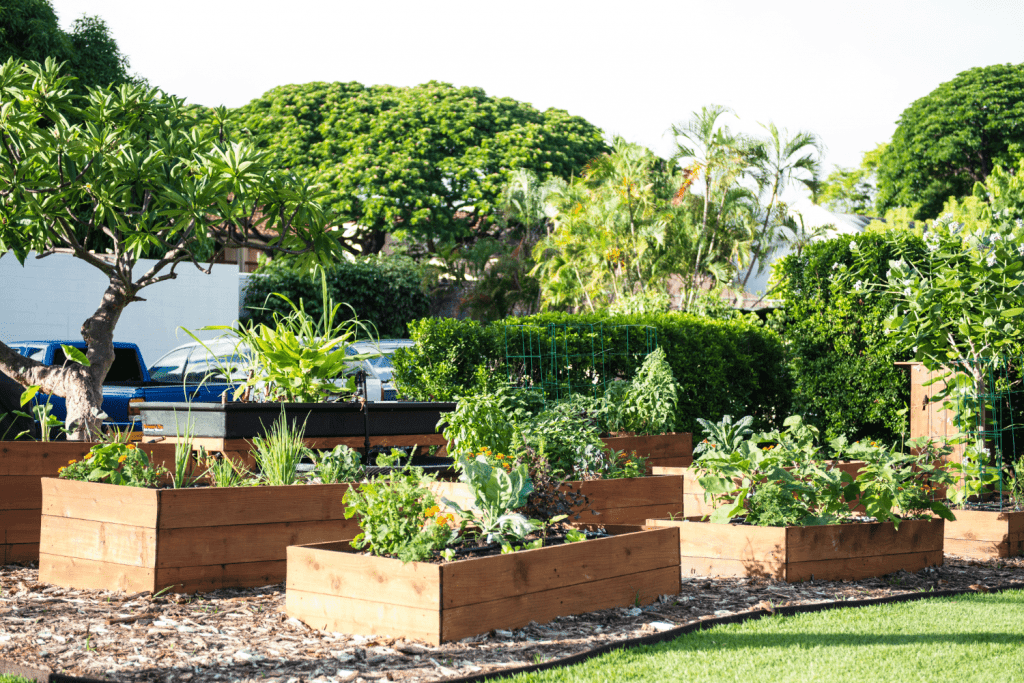
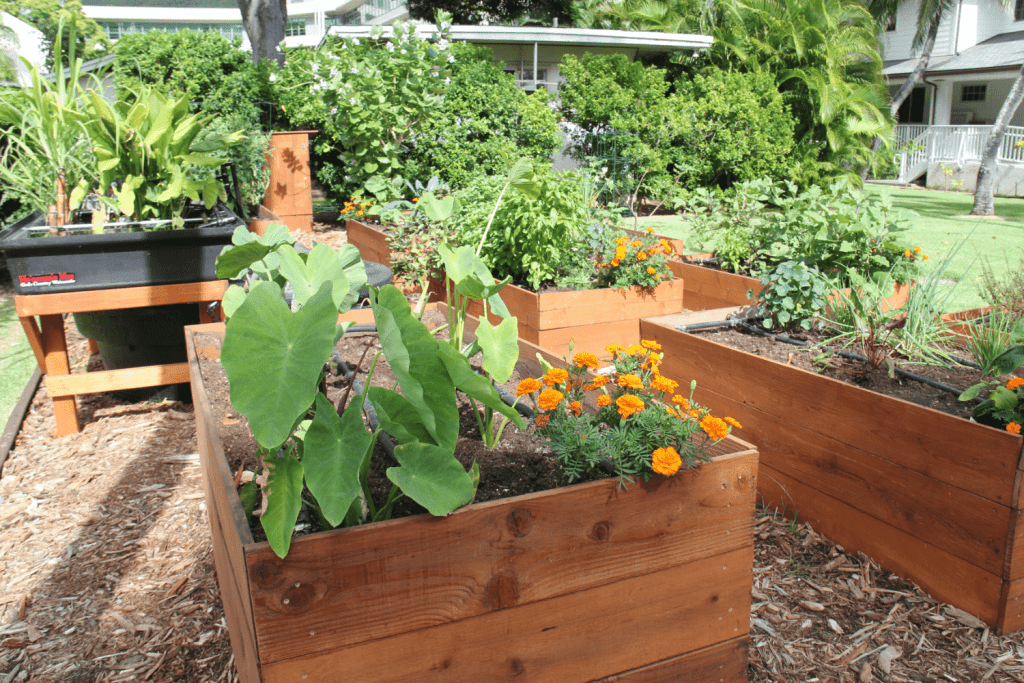
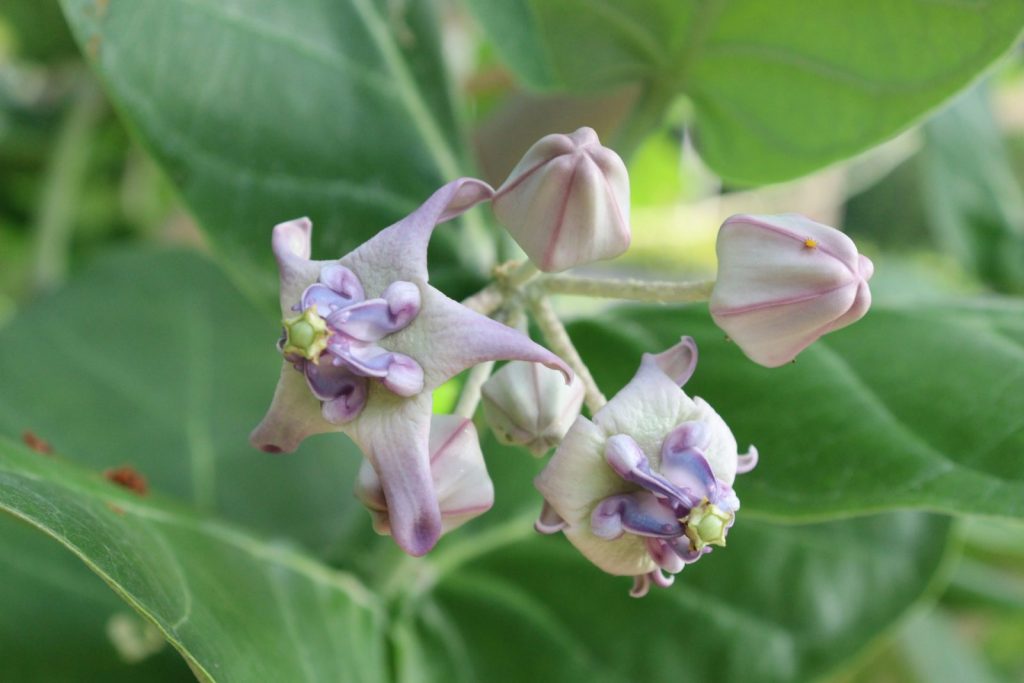
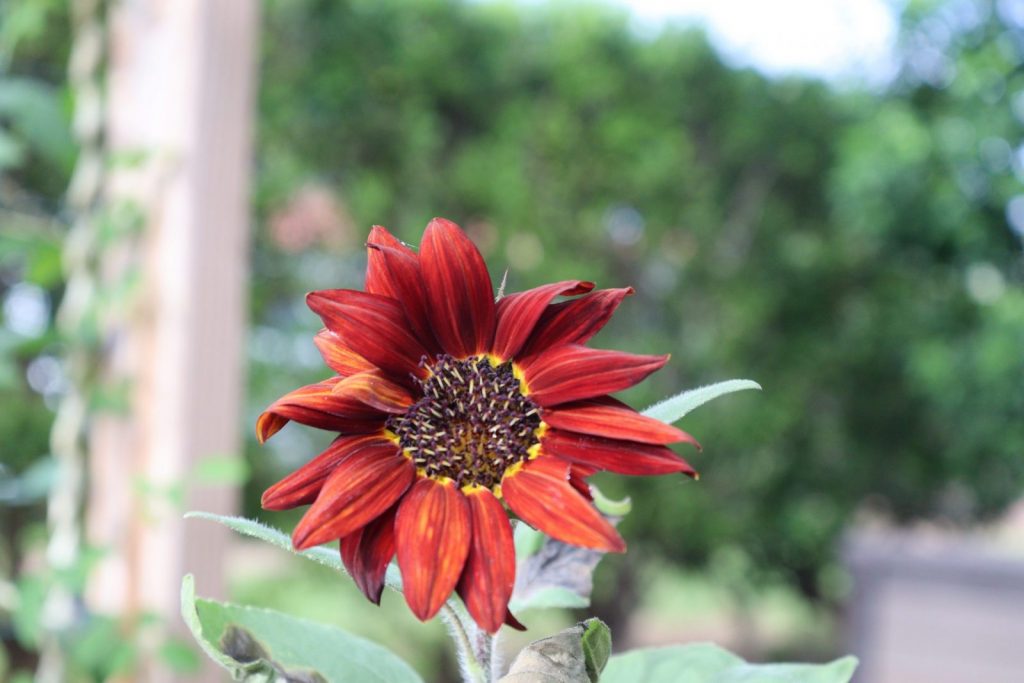
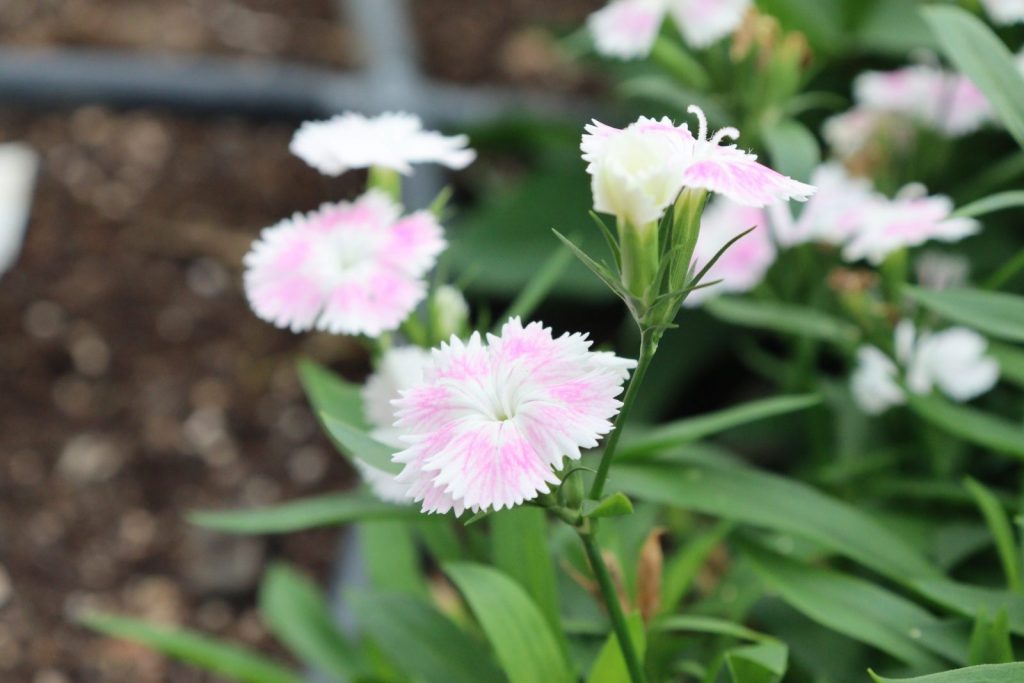
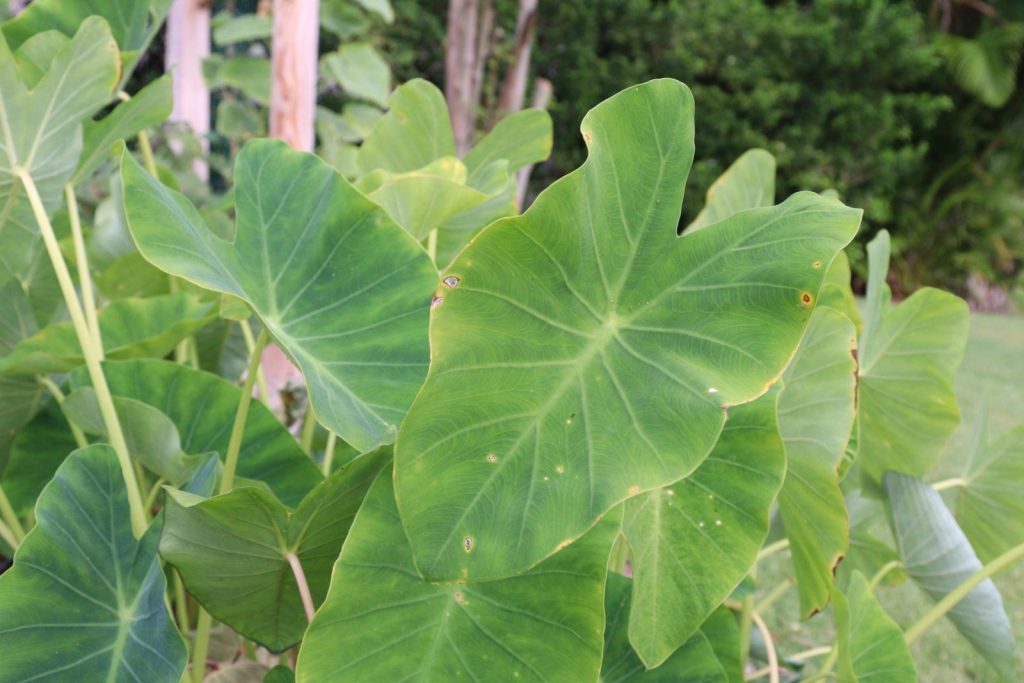
Queen's Handwritten Plant Lists
Read Queen Liliʻuokalani’s handwritten notes about the plants that were once found growing at Washington Place.[10]
Citations
- [1] HABS No HI-6, Addendum to Washington Place, p. 120; “Perseverance Rewarded” Friend (August 1883), 68.
- [2] Mason Architects, Inc. and Kenneth Hays for Department of Accounting and General Services, State of Hawaiʻi, Washington Place Architectural Conservation Plan. October 2007, p 6-7.
- [3] Queen Liliʻuokalani, notes, need to find date, Hawaiʻi State Archives.
- [4] The Farmer’s Institute of Hawaiʻi, Second Place Ribbon, January 28, 1908.
- [5] Washington Place Architectural Conservation Plan. October 2007, p 6-10.
- [6] HABS Report, Addendum to Washington Place, p. 128.
- [7] Washington Place Architectural Conservation Plan. October 2007, p 6-10.
- [8] Advertiser, November 11, 1932.
- [9] Honolulu Star Bulletin, Thursday, March 19, 1967, D2.
- [10] Hawaiʻi State Archives, M93-3-22-155
